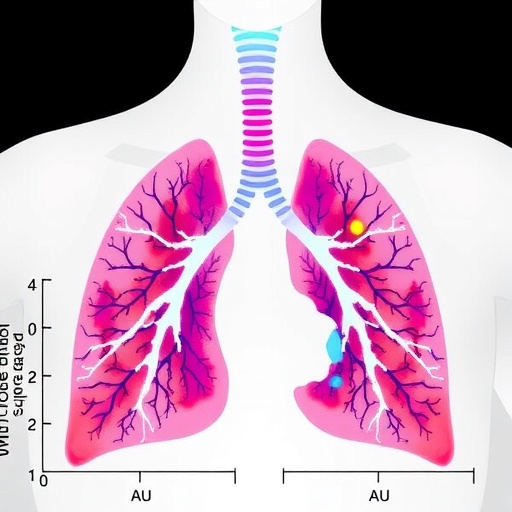A new study published in BMC Cancer challenges the current understanding of the optimal number of induction chemotherapy (IC) cycles for patients diagnosed with locoregionally advanced nasopharyngeal carcinoma (LANPC). This research delves deep into whether administering two or three cycles of induction chemotherapy before the primary treatment provides superior survival benefits or decreases disease progression. The findings carry significant weight in guiding oncologists on treatment strategies that balance efficacy with patient quality of life.
Nasopharyngeal carcinoma (NPC) remains a challenging malignancy due to its aggressive behavior and tendency for locoregional spread. For patients with advanced stages, induction chemotherapy is often employed to reduce tumor burden and improve the effectiveness of subsequent radiotherapy or concurrent chemoradiotherapy. Despite widespread adoption, there has been considerable debate regarding the ideal number of IC cycles. This new retrospective analysis involving nearly 500 patients offers fresh insights that could reshape clinical guidelines.
Between January 2015 and December 2021, clinicians treated 491 patients diagnosed with LANPC, dividing treatment into two cohorts based on whether they received two or three cycles of induction chemotherapy. Interestingly, patients with more advanced disease indicators — particularly stage IVA, higher T stage, and elevated N stage — were more likely to receive three cycles, suggesting a clinician bias toward intensified treatment in more severe cases. This selection bias, however, was rigorously controlled using propensity score matching to ensure comparability between groups in subsequent analyses.
.adsslot_yTSxQat1Xj{ width:728px !important; height:90px !important; }
@media (max-width:1199px) { .adsslot_yTSxQat1Xj{ width:468px !important; height:60px !important; } }
@media (max-width:767px) { .adsslot_yTSxQat1Xj{ width:320px !important; height:50px !important; } }
ADVERTISEMENT
Survival outcomes, including locoregional relapse-free survival (LRFS), distant metastasis-free survival (DMFS), progression-free survival (PFS), and overall survival (OS), were analyzed using multivariate Cox regression techniques. The pivotal discovery was that increasing the IC cycles from two to three did not statistically translate into improved survival benefits across all these outcome measures. Hazard ratios hovered close to unity, indicating negligible differences between the two dosing regimens and calling into question the therapeutic advantage of a third chemotherapy cycle for this patient population.
Toxicity profiles play a pivotal role in determining optimal chemotherapy regimens, as the cumulative side effects can severely impact patient adherence and overall health. Although grade 3 to 4 (severe) toxicities showed no significant difference between the two-cycle and three-cycle groups, the incidence of grade 1 to 2 (mild to moderate) adverse effects, such as leukopenia, neutropenia, anemia, and vomiting, was notably higher in the three-cycle cohort. These findings suggest that adding an extra IC cycle increases patient discomfort and may exacerbate marrow suppression and gastrointestinal symptoms without clear survival gains.
Such increased toxicity presents an important clinical dilemma. While attempting to intensify treatment to eradicate microscopic disease is logical, the trade-off with amplified side effects requires careful evaluation, especially given the lack of corresponding survival improvement. Mild to moderate hematologic toxicities, though not life-threatening, could lead to treatment delays, dose reductions, or greater vulnerability to infections, ultimately impacting delivery of the entire therapeutic course.
Historically, the number of induction chemotherapy cycles in LANPC has ranged from two to four in various clinical settings. However, this study’s granular analysis provides compelling evidence against routine administration of three cycles simply based on disease stage. It invites oncologists to reconsider the necessity of a third cycle, especially in patients who demonstrate good tolerance to initial treatments and those who may be at risk for cumulative toxicity.
Future clinical trials are warranted to prospectively validate these findings. Ideally, randomized controlled trials focusing exclusively on homogeneous patient populations with standardized chemotherapy regimens would ascertain the true impact of varying IC cycle numbers. Such studies should also integrate quality-of-life metrics to holistically assess the trade-offs between treatment efficacy and patient well-being.
Moreover, stratification based on molecular and genetic tumor profiles could tailor treatment intensity more precisely. Identifying biomarkers predictive of chemotherapy response may help determine which subgroup of LANPC patients could potentially benefit from three cycles or more intensive induction schedules. Precision oncology approaches will enhance individualized therapy and reduce unnecessary toxicity in non-responders.
An additional consideration involves the evolving landscape of NPC treatment, including the integration of novel systemic therapies like immunotherapy agents and targeted therapies. Future research will need to explore how these emerging modalities interact with induction chemotherapy cycles and whether they modify the risk-benefit calculus for cycle number selection.
In clinical practice, these findings empower multidisciplinary teams to make evidence-based decisions surrounding induction chemotherapy for LANPC. They highlight the imperative for balancing aggressive treatment strategies against the backdrop of patient quality of life and toxicities, advocating for a potentially more conservative yet equally effective approach involving two IC cycles.
The study’s limitations stem from its retrospective design and inherent selection biases despite attempts at statistical adjustment. Additionally, variations in chemotherapy regimens, supportive care, and radiation techniques over the study period may confound the results. Nonetheless, the large sample size and rigorous analytic methods lend considerable credibility to the conclusions.
In summary, this investigation offers a paradigm-shifting perspective that two cycles of induction chemotherapy may suffice in managing locoregionally advanced nasopharyngeal carcinoma, sparing patients from added toxicity without compromising survival outcomes. Clinicians should carefully weigh the risks and benefits of additional cycles on a case-by-case basis while awaiting confirmatory prospective data.
This nuanced understanding aligns with the broader oncologic pursuit of de-escalation where appropriate, emphasizing quality-adjusted survival and minimizing treatment-related morbidity. As oncology continues to advance toward more personalized treatment regimens, evidence such as this is invaluable in fine-tuning therapeutic intensity for maximum patient benefit.
Subject of Research: Optimal number of induction chemotherapy cycles in locoregionally advanced nasopharyngeal carcinoma (LANPC)
Article Title: Two or three cycles of induction chemotherapy in locoregionally advanced nasopharyngeal carcinoma?
Article References:
Guo, LF., Yu, YF., Lu, ZZ. et al. Two or three cycles of induction chemotherapy in locoregionally advanced nasopharyngeal carcinoma?
BMC Cancer 25, 1268 (2025). https://doi.org/10.1186/s12885-025-14699-4
Image Credits: Scienmag.com
DOI: https://doi.org/10.1186/s12885-025-14699-4
Tags: chemotherapy cycle comparison in cancerchemotherapy effectiveness for advanced cancerclinical guidelines for nasopharyngeal carcinomainduction chemotherapy for nasopharyngeal cancerlocoregionally advanced nasopharyngeal carcinomaoncological treatment strategies for NPCoptimal cycles of chemotherapy in LANPCpatient quality of life in cancer treatmentretrospective analysis of cancer treatmentstage IVA nasopharyngeal carcinoma treatmentsurvival benefits of induction chemotherapytumor burden reduction strategies





